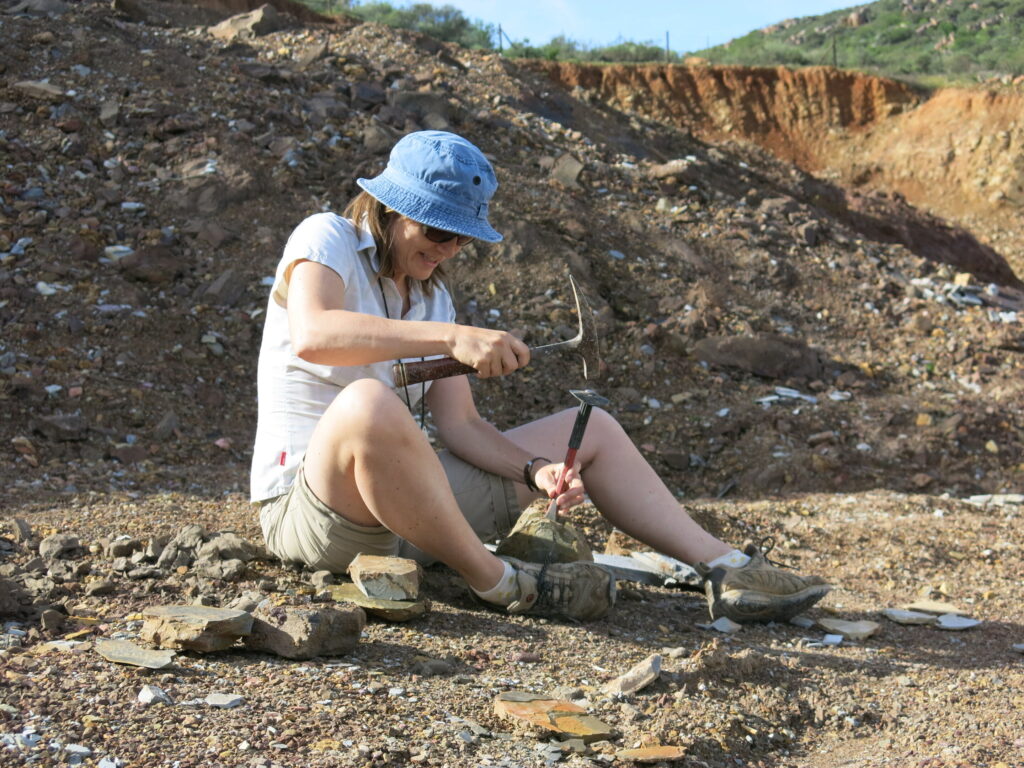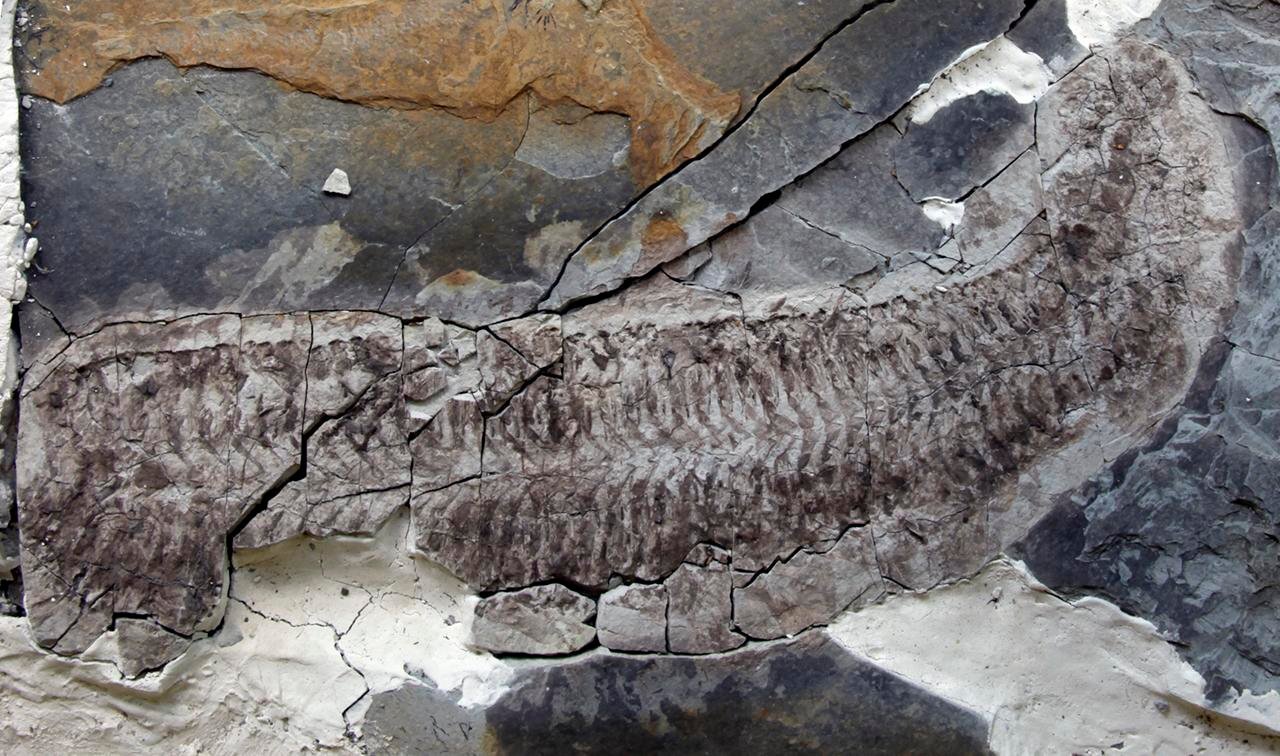In a discovery that has both intrigued and captivated the world of paleontology, a new species of fossil, dated at an astonishing 444 million years old, has been found to possess a level of preservation that is truly remarkable. Unlike most fossilized creatures, whose external features are typically all that survive the ravages of time, this new species has managed to preserve its insides — muscles, tendons, even its digestive system — with an unparalleled level of detail. This extraordinary specimen, affectionately named “Sue” after the mother of the paleontologist who dedicated a quarter-century to uncovering it, provides unprecedented insight into the anatomy of ancient life.
The fossil, now formally identified as Keurbos susanae, represents an entirely new genus and species of marine arthropod. Its discovery is the result of 25 years of meticulous research led by Professor Sarah Gabbott from the University of Leicester’s School of Geography, Geology, and the Environment. Published in the prestigious journal Palaeontology, the study highlights not only the exceptional preservation of Sue’s internal structure but also the mysteries surrounding her place in the broader evolutionary tree of life.
The Unusual Preservation: A Time Capsule from the Deep
Sue’s preservation is nothing short of miraculous. Unlike most fossils, which are often preserved by the hardening of their external shells or exoskeletons, Sue’s insides have been fossilized with incredible clarity. Her muscles, sinews, tendons, and even parts of her digestive system have been mineralized into a detailed “time capsule” that offers a rare look into the soft tissue anatomy of ancient life forms. Yet, paradoxically, her carapace (outer shell), head, and legs are absent, presumably lost to decay millions of years ago.
Professor Gabbott, the lead researcher behind the discovery, describes Sue as an “inside-out, legless, headless wonder,” underscoring the unusual nature of the specimen. “Sue’s insides are a mineralized time capsule,” she said. “We are now sure she was a primitive marine arthropod, but her precise evolutionary relationships remain frustratingly elusive.” The fossil’s internal details have offered scientists valuable clues about the biology of ancient arthropods, but the absence of the more recognizable external features has left some unanswered questions about her evolutionary ancestry.
Today, arthropods — including shrimp, lobsters, spiders, and insects — make up roughly 85% of all animal species on Earth. These creatures have an exceptional fossil record that stretches back more than 500 million years, providing scientists with a wealth of information about their evolution. However, most of these fossilized remains tend to preserve only the external features, such as shells and exoskeletons. Sue’s case stands out as a rare exception, with its internal structure providing scientists with an unprecedented opportunity to study the soft tissues of an ancient creature.

The Origins of Sue: A Frozen Sanctuary from the Past
Sue’s remarkable preservation story begins in the Soom Shale, a geological formation located 250 miles north of Cape Town, South Africa. This site, rich in silts and clays, dates back to a time when the Earth was undergoing a dramatic transformation. Around 444 million years ago, during the Ordovician period, the planet was gripped by one of the five mass extinctions in Earth’s history — a catastrophic event believed to have wiped out about 85% of species.
The Soom Shale, however, appears to have been a refuge for certain marine life forms, including Sue. The sediment in this region, though toxic and devoid of oxygen, helped to preserve the remains of life forms that would otherwise have decayed over time. Research suggests that the water in which Sue swam was saturated with hydrogen sulfide, a deadly compound that not only made the environment hostile to most life forms but also contributed to the preservation of the creatures that lived there. The lack of oxygen, combined with the presence of hydrogen sulfide, created the ideal conditions for the unusual mineralization process that preserved Sue’s soft tissues in remarkable detail.
The fact that Sue was able to thrive in such a toxic environment offers a glimpse into how some species were able to survive during one of the most tumultuous periods in Earth’s history. While much of the planet was undergoing massive ecological upheaval, the marine basin where Sue lived seems to have remained relatively protected, offering sanctuary to a variety of life forms that would otherwise have perished.
The Challenge of Interpretation: A Fossil Too Rare to Compare
Despite the unprecedented preservation of Sue, the fossil presents significant challenges for paleontologists attempting to place it within the evolutionary timeline. The specimen’s unusual preservation makes it difficult to compare with other fossils from the same period, and as a result, scientists have struggled to pinpoint its exact place in the evolutionary tree. While it is clear that Sue belongs to the arthropod family, her lack of external features leaves researchers guessing about the specifics of her evolutionary lineage.
For Professor Gabbott, the struggle to interpret Sue’s significance has been a long and arduous journey. She recalls that the small quarry where she first discovered the fossil has largely disappeared, making it unlikely that more specimens will be found. Over the course of 25 years, she has hoped to uncover another specimen with its head or legs intact, but so far, Sue remains an anomaly.


“This has been an ultramarathon of a research effort,” says Professor Gabbott. “In large part, because this fossil is just so beautifully preserved, there’s so much anatomy there that needs interpreting. Layer upon layer of exquisite detail and complexity. I’d always hoped to find new specimens, but it seems after 25 years of searching, this fossil is vanishingly rare.”
Sue’s Affectionate Name: A Tribute to Family
The name “Sue” may seem simple, but it carries a personal meaning for Professor Gabbott. In a heartfelt tribute to her mother, the paleontologist named the fossil after the woman who has supported her throughout her career. “My mom always said I should follow a career that makes me happy — whatever that may be,” Professor Gabbott explains. “For me, that is digging rocks, finding fossils, and then trying to figure out how they lived, what they tell us about ancient life and evolution on Earth.”
In a humorous twist, Professor Gabbott jokes, “I tell my mom in jest that I named the fossil Sue after her because she is a well-preserved specimen.” However, the sentiment behind the name is genuine, with Professor Gabbott adding, “Sue’s discovery is a culmination of years of passion, hard work, and support from my family, especially my mom.”
The fossil has not only provided invaluable insights into the history of life on Earth but has also become a symbol of perseverance and dedication. As Professor Gabbott reflects on the long road to uncovering Sue, she expresses a sense of fulfillment in the knowledge that her work will contribute to our understanding of Earth’s ancient ecosystems.
Conclusion: A Glimpse into Earth’s Ancient Past
Sue’s discovery offers a rare and exciting opportunity to study the soft tissues of an ancient arthropod, providing invaluable insights into the physiology of prehistoric life. Despite the challenges that remain in fully understanding her evolutionary significance, Sue stands as a testament to the extraordinary preservation conditions that can occur under the right circumstances. As scientists continue to study her remains, they hope to unlock further secrets about the creatures that once roamed Earth’s oceans.
For Professor Sarah Gabbott, the discovery of Sue represents the culmination of a lifelong passion for paleontology. The fossil is not only a fascinating scientific find but also a deeply personal reminder of the journey she has taken with the support of her family. As Sue’s legacy continues to unfold, she will undoubtedly remain a source of wonder for both the scientific community and the public, offering a unique window into a time long past.
Reference: A new euarthropod from the Soom Shale (Ordovician) Konservat-Lagerstätte, South Africa, with exceptional preservation of the connective endoskeleton and myoanatomy, Palaeontology (2025). DOI: 10.1002/spp2.70004
